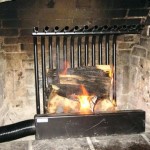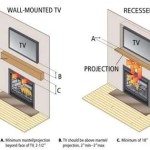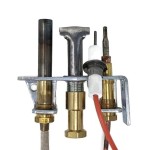Direct Vent Propane Gas Fireplace Inserts: A Comprehensive Guide
Direct vent propane gas fireplace inserts represent a significant upgrade for existing fireplaces, offering a blend of efficiency, convenience, and aesthetic appeal. These inserts are designed to be installed directly into an existing masonry or factory-built fireplace, transforming it from a potentially inefficient wood-burning setup into a modern and effective heating source. The "direct vent" designation refers to the sealed combustion system, which draws combustion air from outside the home and vents exhaust gases directly outdoors through a dedicated vent system. This system ensures a safe and efficient operation, minimizing the risk of indoor air pollution.
Propane gas, also known as liquefied petroleum gas (LPG), is a versatile and readily available fuel source. Its use in fireplace inserts offers advantages over traditional wood-burning fireplaces, including cleaner burning, consistent heat output, and ease of use. Unlike wood-burning fireplaces, propane inserts eliminate the need for storing, hauling, and loading firewood. The ability to control the flame height and heat output with a thermostat further enhances the user experience.
This article explores the fundamental aspects of direct vent propane gas fireplace inserts, covering their benefits, components, installation considerations, maintenance requirements, and safety measures. It aims to provide a comprehensive understanding of these inserts to assist homeowners in making informed decisions about their home heating options.
Benefits of Direct Vent Propane Gas Fireplace Inserts
Direct vent propane gas fireplace inserts offer a multitude of benefits that contribute to their growing popularity. These advantages extend beyond simply providing heat, encompassing aspects of efficiency, convenience, safety, and environmental impact.
Enhanced Efficiency: Traditional open-hearth fireplaces are notoriously inefficient, often drawing heated air from the room and sending it up the chimney. This can result in significant heat loss and increased heating costs. Direct vent propane inserts, on the other hand, are designed to be highly efficient. Their sealed combustion systems prevent the escape of heated air and ensure that most of the heat generated is radiated into the room. Many models boast efficiency ratings of 70% or higher, translating to lower energy bills and reduced fuel consumption.
Convenience and Ease of Use: The convenience factor is a major draw for many homeowners. Unlike wood-burning fireplaces, propane inserts require no manual labor for fuel loading and ash removal. Starting a fire is as simple as flipping a switch or pressing a button on a remote control. Thermostatic controls allow for precise temperature regulation, maintaining a consistent and comfortable room temperature. This ease of use makes propane inserts an ideal choice for individuals who value convenience and automation in their home heating systems.
Improved Safety: Direct vent systems prioritize safety by preventing the backdrafting of combustion gases into the home. The sealed combustion chamber and direct venting system ensure that all exhaust gases are safely expelled outdoors. This eliminates the risk of carbon monoxide poisoning, a serious concern with improperly ventilated wood-burning fireplaces. Many propane inserts also incorporate safety features such as automatic shut-off valves and flame failure detection systems, further enhancing their safety profile.
Clean Burning and Reduced Emissions: Propane gas is a relatively clean-burning fuel compared to wood. It produces significantly fewer pollutants, such as particulate matter and carbon monoxide, which can contribute to air pollution and respiratory problems. Direct vent propane inserts are often certified to meet stringent emissions standards, ensuring that they operate in an environmentally responsible manner. This makes them a more sustainable heating option for homeowners concerned about their environmental impact.
Aesthetic Appeal: Beyond their functional benefits, propane inserts offer a range of aesthetic options to complement any home décor. They are available in various styles, from traditional log sets to contemporary glass media, allowing homeowners to create a visually appealing focal point in their living space. The realistic flames and glowing embers provide the ambiance of a traditional fireplace without the mess and hassle of wood-burning.
Key Components and Functionality
Understanding the key components of a direct vent propane gas fireplace insert is essential for proper operation and maintenance. Each component plays a crucial role in the safe and efficient functioning of the system.
Firebox/Combustion Chamber: This is the enclosed area where the propane gas is burned. It is typically constructed of heavy-duty steel or cast iron to withstand high temperatures. The firebox is designed to maximize heat output and ensure complete combustion of the fuel.
Burner Assembly: The burner assembly is responsible for mixing propane gas with air and igniting the mixture to produce a flame. It typically consists of a burner tube, a gas orifice, and an ignition system. The design of the burner assembly influences the flame pattern and overall aesthetic appeal of the fireplace.
Log Set or Media: These are decorative elements that simulate the appearance of a traditional wood-burning fireplace. Log sets are typically made of ceramic fiber and are designed to withstand high temperatures. Contemporary options include glass media, such as fire glass or decorative stones, which offer a modern and stylish look.
Vent System: The direct vent system consists of two concentric pipes, one for intake air and one for exhaust gases. The inner pipe carries exhaust gases out of the home, while the outer pipe draws fresh air from outside for combustion. This sealed system prevents the backdrafting of combustion gases and ensures a safe and efficient operation.
Control Valve and Thermostat: The control valve regulates the flow of propane gas to the burner. It is typically controlled by a thermostat, which allows for precise temperature regulation. The thermostat senses the room temperature and adjusts the gas flow accordingly to maintain the desired level of heat.
Ignition System: The ignition system is responsible for igniting the propane gas. Most modern inserts use electronic ignition systems, which are more reliable and efficient than older pilot light systems. Electronic ignition systems use a spark or hot surface igniter to ignite the gas, eliminating the need for a continuously burning pilot light.
Safety Features: Direct vent propane inserts incorporate various safety features to prevent accidents and ensure safe operation. These features may include automatic shut-off valves, flame failure detection systems, and carbon monoxide detectors. These safety features provide added peace of mind for homeowners.
Installation, Maintenance, and Safety Considerations
Proper installation, regular maintenance, and adherence to safety guidelines are crucial for ensuring the longevity and safe operation of a direct vent propane gas fireplace insert.
Professional Installation: Installation of a direct vent propane fireplace insert should always be performed by a qualified and licensed professional. This ensures that the insert is installed correctly and in compliance with local building codes. A professional installer will also be able to properly size the insert to the fireplace opening and ensure that the venting system is properly installed.
Venting System Inspection: The venting system should be inspected regularly to ensure that it is free of obstructions and in good working order. Any damage to the vent pipes should be repaired or replaced immediately. Proper venting is essential for preventing the backdrafting of combustion gases into the home.
Propane Tank and Gas Line Inspection: The propane tank and gas lines should be inspected regularly for leaks and damage. A professional propane technician should perform a leak test to ensure that the system is sealed and safe. Any leaks should be repaired immediately to prevent a fire hazard.
Cleaning and Maintenance: The firebox and burner assembly should be cleaned regularly to remove dust, debris, and soot. A soft brush or vacuum cleaner can be used to clean these components. The glass door should also be cleaned with a non-abrasive cleaner to maintain visibility. The log set or media should be inspected for damage and replaced as needed.
Carbon Monoxide Detection: A carbon monoxide detector should be installed near the fireplace insert to provide early warning of any carbon monoxide leaks. The detector should be tested regularly to ensure that it is functioning properly. Carbon monoxide is a colorless and odorless gas that can be deadly, so it is important to have a working detector in the home.
Adherence to Manufacturer's Instructions: Always follow the manufacturer's instructions for operation, maintenance, and safety. These instructions provide specific guidelines for your particular model of fireplace insert. Failure to follow these instructions can void the warranty and may result in unsafe operation.
Regular Professional Servicing: Schedule an annual professional servicing appointment with a qualified technician. This comprehensive inspection ensures optimal performance and identifies potential issues before they escalate into larger problems. The technician can clean the burner, check the venting system, and test the safety features to ensure that the insert is operating safely and efficiently.

Direct Vent Gas Fireplace Insert With Intellifire Touch Ignition Syste Wood Majestic

30 Ruby Contemporary Intellifire Touch Direct Vent Fireplace Insert Blower And Remote Electronic Ignition Majestic

Rushmore 30 Direct Vent Fireplace Insert Fine S Gas

25 Ruby Traditional Intellifire Touch Direct Vent Fireplace Insert Blower And Remote Electronic Ignition Majestic

Majestic Ruby 35 Direct Vent Gas Insert Ruby35 North Country Fire

Enviro E Series Gas Or Propane Insert Fireplace Fireplaces By Cameron

White Mountain Hearth Rushmore Direct Vent Insert With Truflame Tech Fireplaces Usa

35 Ruby Traditional Intellifire Touch Direct Vent Fireplace Insert Blower And Remote Electronic Ignition Majestic

Inserts Gas Kingsman Direct Vent Fireplace Insert Millivolt Propane Idv36lp

Buy Gas Insert 1 Victory Direct Vent San Francisco Bay Area Ca The Fireplace Element
Related Posts








